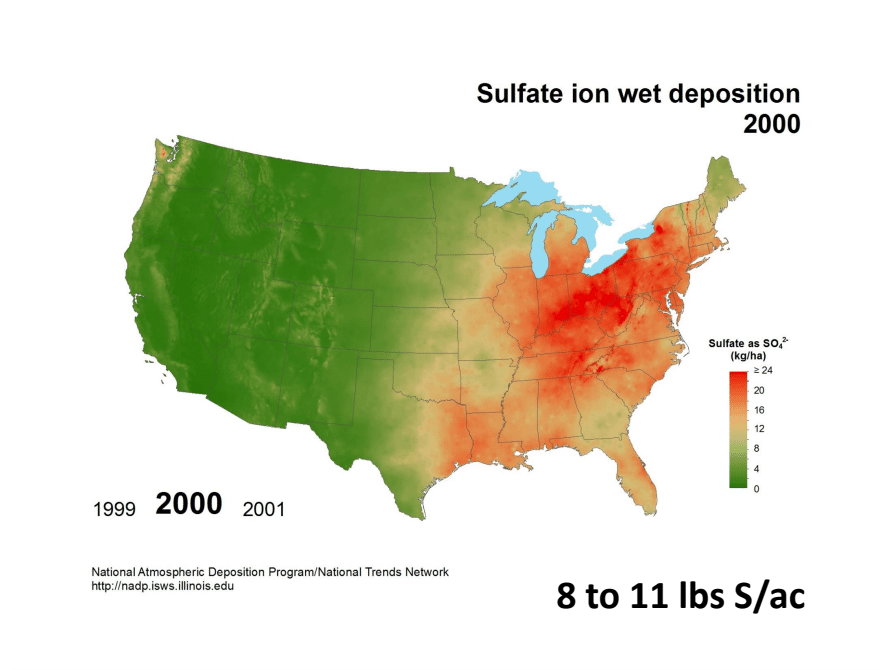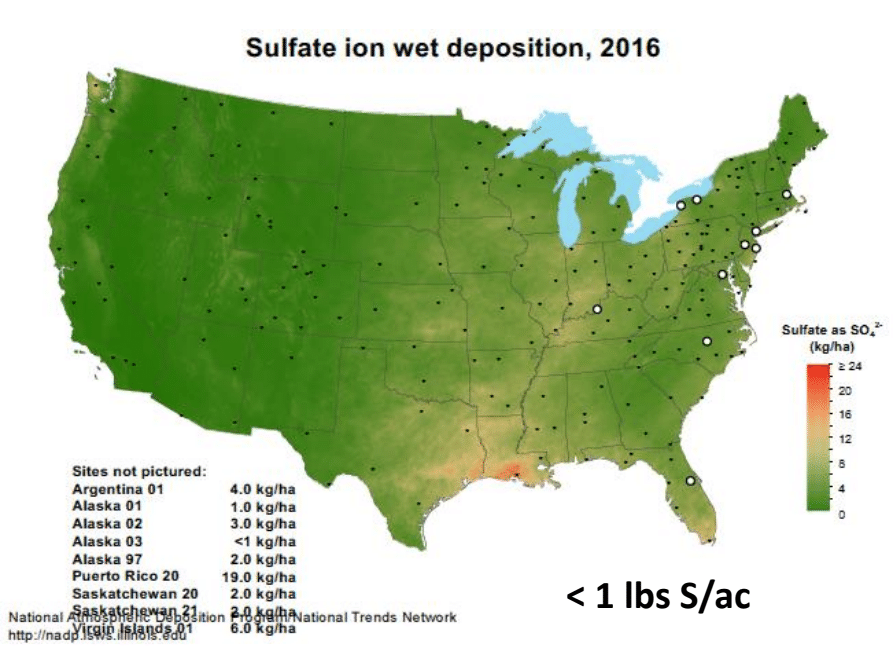Sulfur in Soybeans: Learn How Precise Applications Pay in Yield

Over the last few decades, concentrations of sulfur in the atmosphere have fallen significantly.

These numbers show the sulfate ion wet deposition from 2000, which is how much falls from the atmosphere during a rain.
Related article: Ferrie: Treat Sulfur Like A Macronutrient In Corn To Boost Yields
Now compare that to 2016. Less sulfur pollution is leading to less sulfur deposited back into the soil, and it's a key nutrient in plant growth according to Missy Bauer, Farm Journal field agronomist.

Bauer has been studying soybean plant's response to added sulfur. She's found adding a dry ammonium sulfate at V3 or V4 growth stages can make the most significant impact on yields in soils with less organic matter.
“In our three-year trial, we're looking at just shy of a 4 bu. per acre response to putting sulfur on soybeans mid-season,” Bauer says. “Back then, the economics—before soybean prices really rose—were just shy of $19 net per acre.”
Related article: Producers Eliminate Fungicide and Insecticide Use, Cut Fertilizer 50%
But will you need sulfur on every acre? Bauer isn’t convinced.
The Right Prescription
As you move through fields, there are “pockets” of high organic matter regions that don’t need a sulfur application.
Bauer says her team is exploring all sulfur application options and have pinned-down visible response characteristics.
“The initial plots we did in 2020 look pretty impressive,” Bauer says. “Just off our first year, we had a big sulfur response with a darker, greener and bigger leaf, compared to where we have the controls. We're adding a little higher pod count to these as well. "

The team has found mid-season applications seem to impact plant health longer into the season than previously thought. Bauer recommends trying test strips, as producers can visibly see difference in crop color, which in her trials, always translated to yield.







